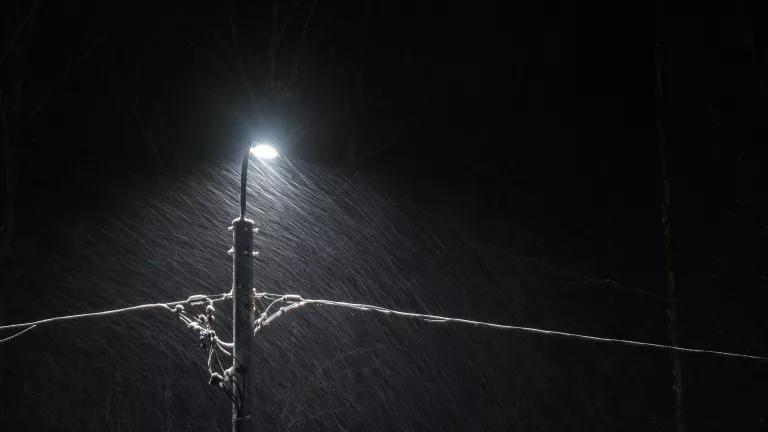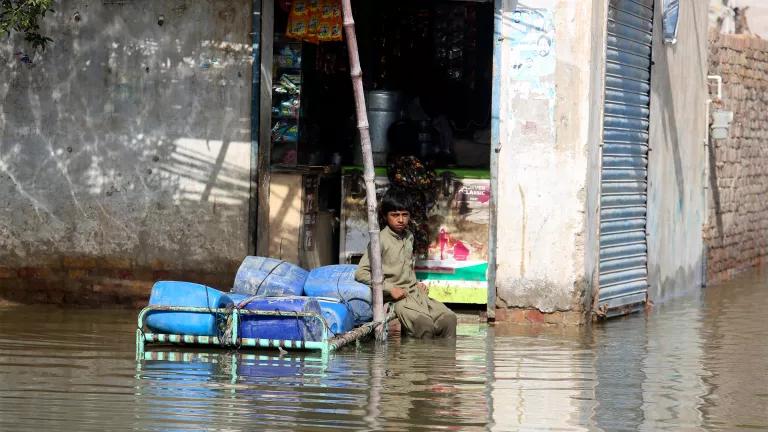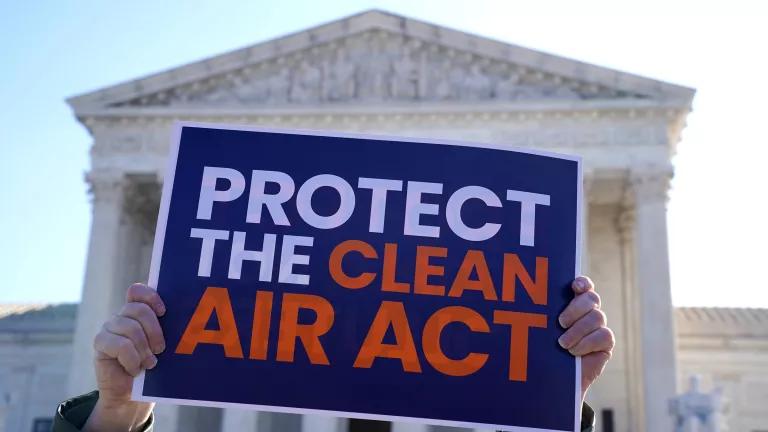Fossil Fuel Plants Are an Infirm Resource
As below-freezing temperatures pummel the U.S., residents cannot endure fossil fuel failures.

The December storm that brought extreme cold to much of the nation demonstrated—yet again—that fossil fuels fail when electricity is needed most. Coal and natural gas plant outages caused blackouts in North Carolina and Tennessee. We’re now learning that during the same storm, a wave of fossil fuel failures almost caused a much larger disaster for 65 million people in the mid-Atlantic and Midwest.
PJM Interconnection, which maintains the power grid from the Outer Banks to Chicago, thought it was ready. While electricity demand was predicted to be high, PJM entered the storm with a very comfortable 44 percent safety margin. Having been burned (frozen?) before by inaccurate forecasts during extreme weather, PJM operators treated the 126 gigawatt (GW) forecast as uncertain, and scheduled extra generation in case it was low. For months, PJM had been asking power plant owners to make extensive preparations for cold weather. All in all, the grid operator started December 23 about as well prepared as we would hope when facing a natural disaster. PJM was comfortable enough that it even planned on providing assistance to neighboring regions.
Then the bottom fell out.
As that day and the next wore on, power plant after power plant failed. Some couldn’t get fuel, some just stopped working, and still others failed to start when called on. By Christmas Eve, an astonishing 46 GW of power plants were out of service—that’s enough to power California. What did nearly all these plants have in common? They were powered by fossil fuels, mostly gas. PJM reported failures across the gas system, including low pressure, frozen compressors, and simply no commercially available fuel. In PJM’s own words, the forced outage rate was “unacceptably high.”
PJM made it through this storm without instituting blackouts, but it did have to stop exports to neighboring regions, which contributed to Duke Energy’s troubles. Because electricity markets are designed to raise prices when supply is short, the near disaster will likely add hundreds of millions of dollars to electricity bills. But what’s really unsettling is that a day that should have been clear sailing turned into a nail-biter; this calls the validity of all of our planning into question.
Poor performance doesn’t cause blackouts. Poor performance that wasn’t planned for does. The issue here isn’t that fossil plants aren’t reliable—it’s that they’ve been representing themselves as reliable, that grid planners have been accepting this, and that the fossil plants are getting paid to be available during emergencies. According to their own press releases, gas “defines reliability.”
Once again, we learned that we can’t rely on gas and coal when extreme weather hits. They’re not infallible, and system reliability will continue to suffer if grid operators keep overestimating gas and coal. Continuing forward with blind faith and excess confidence is a dangerous proposition. So, what should PJM and the Federal Energy Regulatory Commission (FERC) do?
- With urgency, they should complete reforms that properly consider mass failures like this when calculating how much to rely on any particular power plant. The techniques here are well developed and are already in use for renewables. These strategies are particularly good at measuring the effects of multiple resources having the same problem, like solar output dropping when the sun goes down, or when the gas fleet chokes.
- PJM should split its year-round capacity market into seasons. This market was designed to meet surging demand during the hottest days of the year, and it has done a reasonable, if expensive, job at that. But when power demand rises in the cold, the promised power from these gas and coal plants cannot be counted upon. A seasonal capacity market will let PJM find the most reliable and least costly resources for summer and winter separately. That will also end some injustices we’re likely to see: PJM knows that solar plants can’t perform on cold, dark days, and accordingly pays them less, but the year-round market means solar plants may face huge penalties anyway.
- PJM and FERC need to take a hard look at the supply side of natural gas. While gas power plants are part of the electricity industry and can be held accountable for reliability, pipelines and the rest of the upstream gas industry aren’t. We already know the gas industry needs to be better prepared, but so far, FERC has left that to voluntary industry measures. That clearly hasn’t worked. FERC needs to take a searching look at how the industry is preparing for cold weather and find the political will to set binding standards.
- PJM and FERC need to fix market structures that reward unreliable power plants. PJM plants that failed in December face penalties around $100,000 per undelivered megawatt (MW). That sounds like a lot until you realize that many of them have earned $450,000 or more per MW in reliability payments since the last time they were called on. That makes promising to provide power and then failing to do so a profitable business. That’s absurd. On top of that, the penalties don’t go back to the consumers who didn’t get the reliability they paid for. Instead, the penalties are given as “bonus” payments to other power plants. Since power plant ownership is highly concentrated, a lot of the penalties end up just being large companies moving money from one pocket to another.
Yet again, system-wide fossil fuel plant failures came close to causing a major disaster. It’s long past time for grid operators to acknowledge gas and coal’s shortcomings, realistically account for those risks in planning, and get rid of broken commercial structures that make failure profitable.
And one last thing, just for the record: During the emergency, wind produced more than double what PJM had planned on. Lots more wind power and storage are stuck in interconnection queues. PJM and FERC need to get those projects approved so they can connect to the grid. The more diverse our power supply is, the better prepared we are for the next winter storm, summer heat wave, or devastating hurricane.

